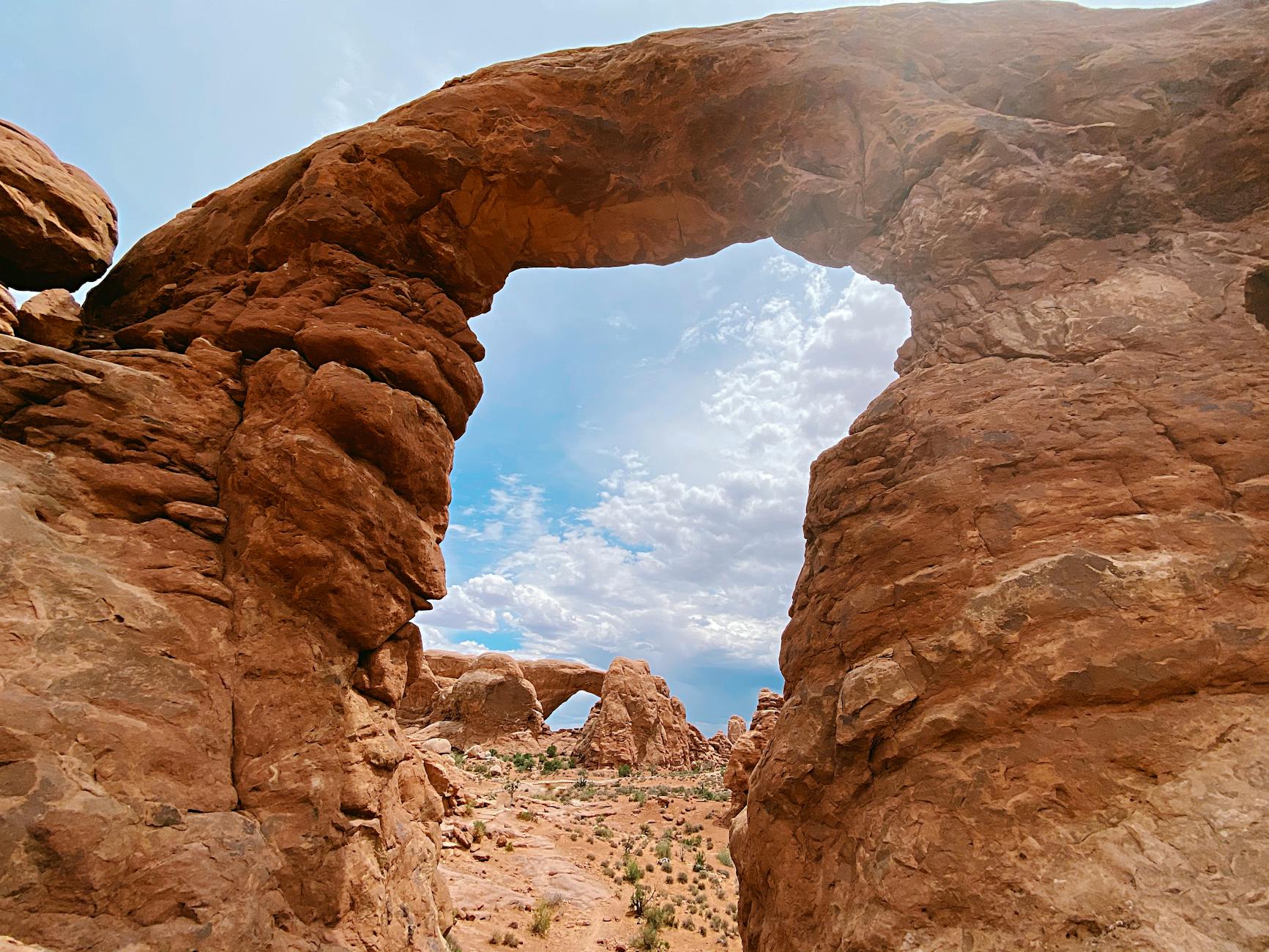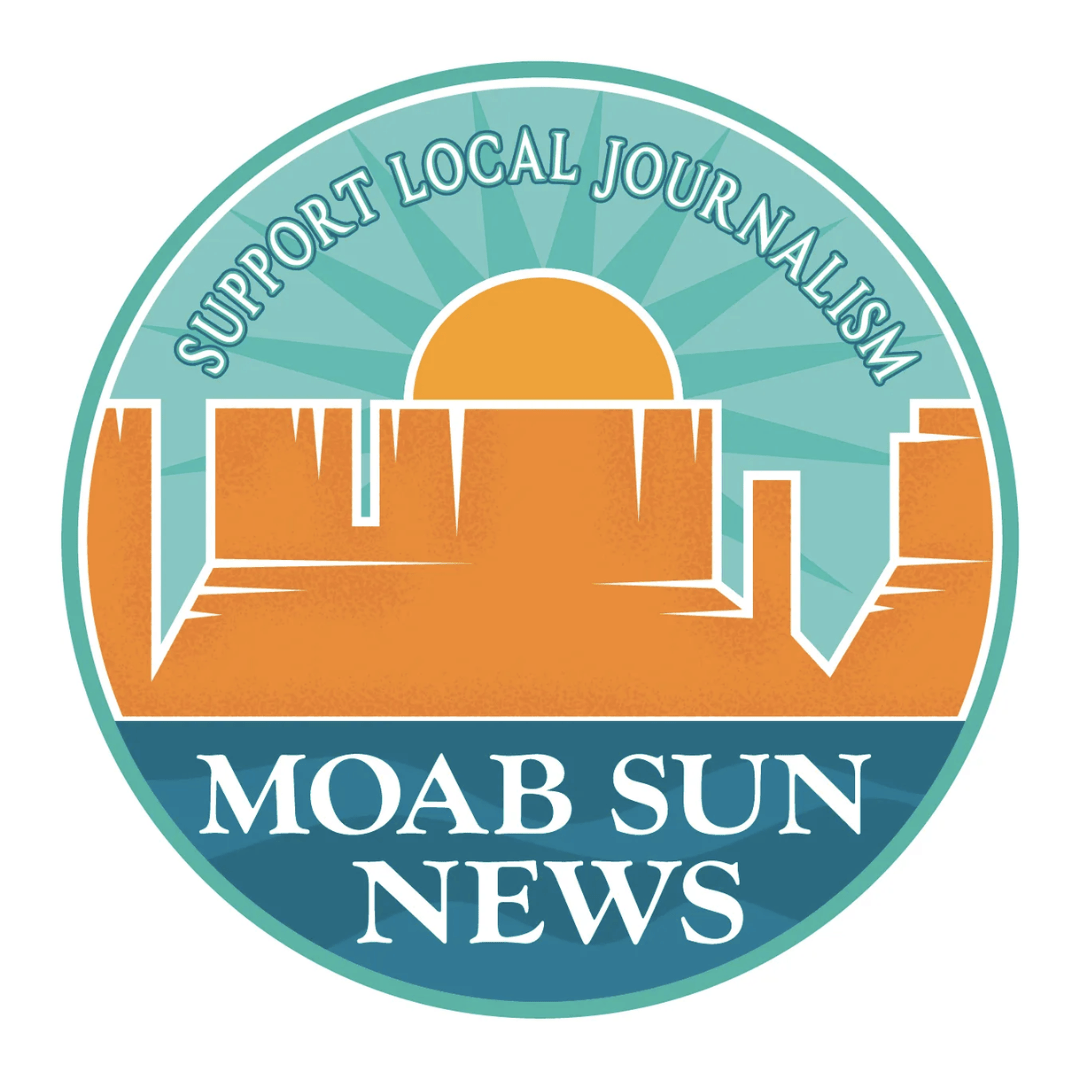At a glance from U.S. Highway 191, the Moab Uranium Mill Tailings Remedial Action (UMTRA) Project appears to progress at a slow, steady slog. Trucks and heavy equipment crawl back and forth across the dusty, barren expanse, little by little removing the 16 million tons of radioactive mine tailings left over from the Atlas uranium mill site.
A closer look reveals an ongoing, high-energy, complex effort by site operators, elected officials and community members to keep the removal operation safe, efficient and timely. Equipment is regularly rotated, inspected, repaired and replaced; project managers consider and implement system improvements; community leaders solicit public opinion on future plans for the site; local advocates lobby for increased funding. Thanks to these efforts, over 9 million tons — about 56 percent — of the tailings have so far been removed from the Moab site and deposited in a lined storage cell in Crescent Junction.
This spring, a contingent of Moab elected officials continued their efforts to support and expedite the project. County council chairwoman Mary McGann, Moab Tailings Project Steering Committee member Joette Langianese, and city council member Tawny Knutson-Boyd traveled to Washington, D.C., to try to persuade the United States Department of Energy (DOE) to allocate an annual budget increase of $10 million to the Moab UMTRA Project.
“They were hoping to get $10 million, because it turned out that with an additional $10 million, the rate of tailings shipments could be nearly doubled,” said Lee Shenton, the community liason between Grand County and the Moab UMTRA Project. “So going from $35 million [the approximate current budget] to $45 million, you could run four trains a week, instead of two.” At that rate, the projected completion date would be 2024, 10 years earlier than the current estimated end date of 2034.
Having the tailings removed more quickly would have multiple advantages. “The greatest benefit to getting the pile moved is keeping contaminates out of the Colorado River,” said McGann. “It will save tax-payer dollars by moving it faster. Wildlife will return. The land will become an asset rather than a deficit.”
The Moab Tailings Project Steering Committee and members of the public have been nurturing that vision of the land as an asset, creating development planning maps for the site after clean-up and remediation are complete— though it’s not guaranteed that Grand County will receive the land. The DOE may decide to keep the site, or transfer it to another federal agency, such as the National Park Service or the Bureau of Land Management. Representatives from these agencies have been a part of the hypothetical planning process, so whoever ends up managing the site will be aware of community input.
The contingent of local advocates referenced these development plans, designed to accommodate the expressed desires of the community, when presenting their case to federal agencies and congressional delegations.
The plans give visual proof of community engagement and interest in the project, and suggest the economic and social benefits that could be gained from the site once it’s cleaned up. The advocates also presented data from previous years when the project had more funding, and accordingly moved faster.
“They’ve demonstrated that they can run their operation efficiently and safely,” said Shenton, referring to years when as many as 10 trains per week carried tailings from the UMTRA site to the disposal cell. “When our folks went out there [to Washington, D.C.] and pointed that out, and said, ‘This is a good project, they’ve proven they can use the money, they know how to do it, ‘cause they’ve done it before’…I think that carried some weight.”
For three days the Moab team argued their case in Washington, and they felt that their time was productive.
“All of the Utah Senators and Representatives were supportive,” said McGann, “but it was John Curtis who gave us the greatest amount of support.”
John Curtis, the congressional representative for Utah’s 3rd District, advocated for a spending increase on the Moab UMTRA Project in a speech before Congress on June 7th.
“Located just across the street from Arches National Park, the Energy Department is currently undertaking the largest mill tailing pile relocation in the United States,” Curtis said as he urged his colleagues to support a budget increase.
The Moab contingent did not receive all the funding they requested, but the project was awarded a one-time budget boost of about $2.9 million dollars, called a “plus-up” in federal funding lingo. The catch is that the extra money must be spent by the end of the 2018 fiscal year — that is, by September 30 of this year.
“The old motto is true here, use it or lose it,” said Shenton. “It all sounds like good news that they’ve got extra money — and it is, but it’s not a slam dunk to use that money all in the time they have available. And the tricky part is for their project team leaders to figure out the best way to use that money in a way that they can actually get it done in the next four months.”
Federal projects are subject to regulations and restrictions meant to ensure safety and fairness, and reduce taxpayer liability. These precautions can make quick action difficult. However, this isn’t the first time the site operators have had to allocate extra cash flow on short notice.
Last year, McGann, Langianese, and another local advocate, city council member Rani Derasary, lobbied in Washington last year for a budget increase for the Moab UMTRA Project, and the project was awarded a $3 million plus-up. That money was spent on a water wagon for dust suppression, a bulldozer used to excavate mill tailings at the Moab site, and five reach stackers (machines that move shipping containers short distances), the DOE said.
In a statement, the DOE said plans to spend the funding includes the purchase of about 50 new rail car containers for transporting the tailings, and two new articulated haul trucks, which move containers from the rail line and empty them into the disposal cell.
“Replacing these pieces of equipment will help keep personnel safe, the environment protected, and the Project moving forward,” the statement read. There is also a possibility that there will be additional shipment days, moving the tailings just a little bit faster.
Over the years, the Moab UMTRA Project has seen ups and downs and shifting time lines. The DOE first took over the site in 2001, under the Uranium Mill Radiation Control Act of 1978.
“It took time to go through all the public processes and evaluation and the planning to come up with an acceptable plan for doing the remediation,” said Shenton. “So with all the things that have to go on — the preparation and the public review and the planning — they didn’t actually start shipping tailings until 2009.”
Then, in 2010, a burst of funding from the American Recovery and Reinvestment Act roughly doubled the rate of removal. In 2012, the budget was deeply slashed and tailings shipments were proportionally scaled back. The projected completion date has been repeatedly adjusted to reflect budget changes.
“The original law said that the project was supposed to be done by this year,” said Shenton. “So here we are, in 2018, and the project is over halfway through moving the tailings, but they could have been close to being done this year if they had gotten the funding they needed.”
Shenton acknowledges, however, that other communities with UMTRA projects are vying for the same funds. When the budget was cut in 2012, the DOE sent a representative to Moab to explain that funding was going to be concentrated on sites in other states that posed greater risks to public health.
“It’s difficult to argue with that,” Shenton admitted. Still, if the Moab project were completed faster, it would free up funding currently funneled into the Moab site.
Shenton has been the liason for the Moab UMTRA Project for nine years, and has become keenly aware of the complexities of its operation and funding. For him particularly, the project is of great significance, but he probably spoke for many long-term Moab residents when he sincerely said, “I’d very much like to see that project get completed.”
Shenton announced earlier this year that he will retire from the project in July.
UMTRA funding must be spent by Sept. 30
“The old motto is true here, use it or lose it. It all sounds like good news that they’ve got extra money — and it is, but it’s not a slam dunk to use that money all in the time they have available. And the tricky part is for their project team leaders to figure out the best way to use that money in a way that they can actually get it done in the next four months.”





